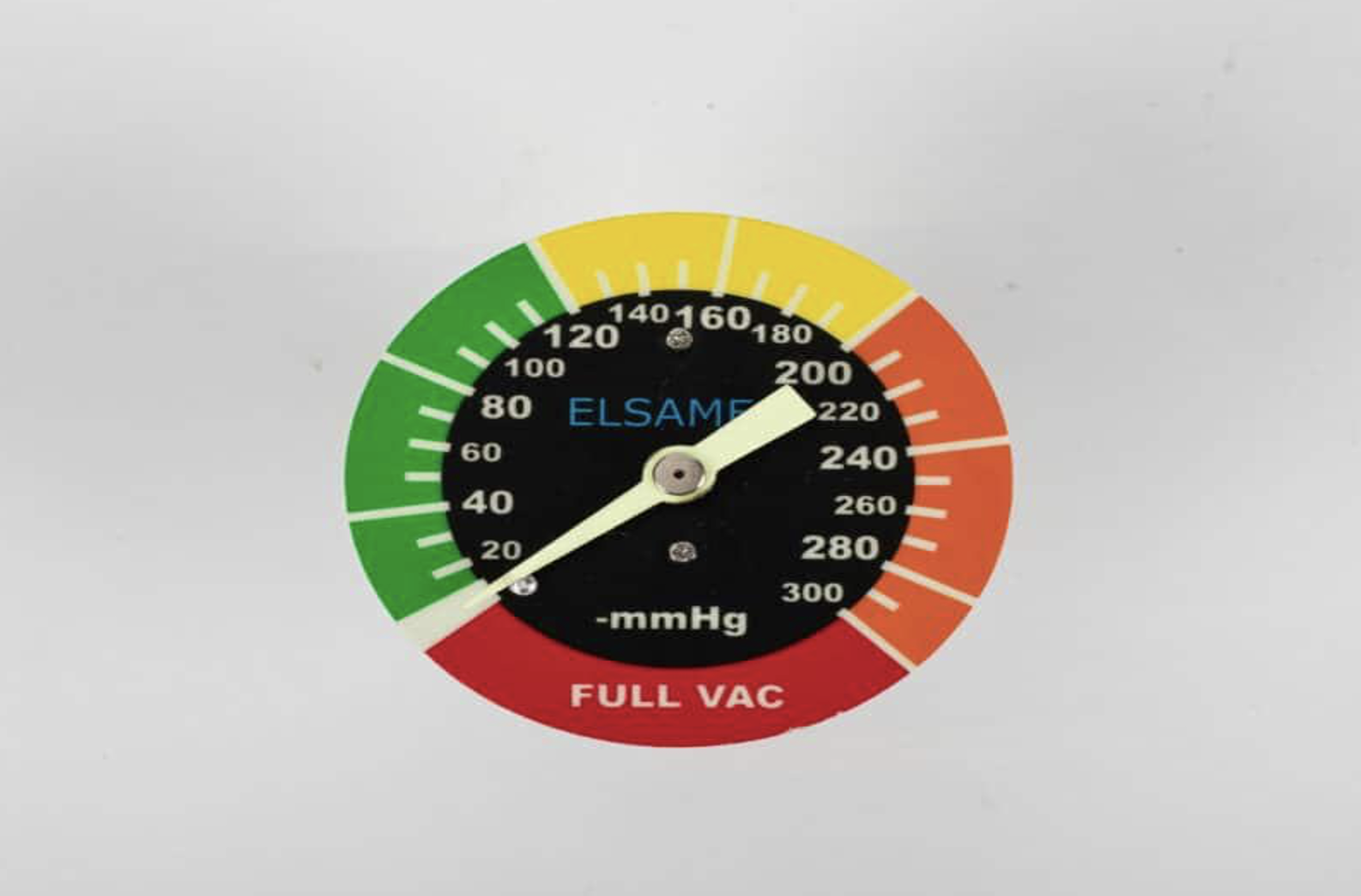
A diaphragm pressure gauge measures pressure in a fluid by using a diaphragm with a known pressure. It has a variety of applications, including controlling the pressure of a gas canister and detecting ambient pressure. Alternatively, a vacuum pump’s vacuum force can be recorded using it. Such gauges are ideal to be used on dense medium owing to the presence of a diaphragm. The diaphragm may be covered or enclosed with foil for caustic liquids and gases.
Table of Contents
Properties of the diaphragm
- Diaphragm gauges have pressure ranges of 10 mbar (0.145 psi) to 40 bar (580,15 psi). Diaphragms with a bigger diameter are employed for narrower measurement ranges (on the order of the mbar). This enhances the diaphragm’s sensitivity to minor pressure variations while simultaneously lengthening the stroke. The accuracy will be improved due to the enhanced sensitivity. Because of the long-stroke length, the transmission mechanism might have a lower transmission ratio. The latter is advantageous since the diaphragm puts less effort into the transmission mechanism due to the low pressure.
- The diaphragm gauge reaches its limitations at pressures below ten mbar. To monitor such low pressures, the diaphragm must be ultra-thin to have enough flexibility, rendering it unreliable. The capsule pressure gauge is designed to monitor extremely low pressures.
- Diaphragm pressure gauges are offered in four different accuracy classes: 0.6 to 1 – 1.6 – 2.5 – 4, and 4. As always, full scale is represented as a percentage. The kind of material, thickness, waveform, and diameter of the diaphragm are all factors that influence accuracy.
- These pressure gauges are vibration-insensitive due to the annular clamping of the diaphragm.
- Because the diaphragm is forced against the top flange when the pressure is too high, these gauges provide superior overpressure protection due to their construction. These pressure gauges can withstand pressures of around five times the full-scale value by default. This is substantially higher than the 1.3 times complete-scale value overpressure protection of a Bourdon tube pressure gauge. When the top flange is designed to match the diaphragm’s convolutions, the overpressure protection can reach 100 times the full-scale value.
Uses of a diaphragm pressure gauges
• For monitoring places where there is a higher level of overflow
• Suitability for high dynamic pressure loads and vibrations with liquid-filled case
• For use in harsh situations with gaseous, liquid, and aggressive media.
• For polluted and viscous media, the open connecting flange option is available.
How does a diaphragm pressure gauge work?
A round membrane is compressed between two flanges in a diaphragm pressure gauge.
The displacement of the measuring element is caused by the positive or negative pressure pressing on the diaphragm.
The deflection’s size is proportional to the pressure being measured, with a pressure range of 10 mbar to 60 bar, the diaphragm pressure device for measuring gases and liquids.
The diaphragm is most suited for measuring gauge, absolute, and differential pressures. The basic part of the diaphragm pressure gauge is a circular, corrugated diaphragm that is clamped or welded between two flanges. Resilient steels, such as stainless steel or Inconel are commonly used to make the diaphragm. The pressure element’s deflection is conveyed via a connection or mechanism. This technique magnifies the element’s slight deflection and sends it to the pointer. The processing pressure is exerted to the diaphragm’s bottom side, while the diaphragm’s topside is open to ambient pressure. The differential pressure moves the pointer from across the diaphragm, which elevates or lowers the diaphragm.
The diaphragm’s deflection must be linear, with a similar rise in pressure accompanied by a similar deflection at each time. A metal diaphragm with a flat surface can only be linear if the deflection is modest. At a larger deflection, the flat diaphragm loses its linearity as more and more force is applied, causing it to stiffen. A corrugated metal profile diaphragm is commonly utilised in industrial applications. The linear deflection of a corrugated diaphragm is ensured, and it is more elastic than a flat diaphragm.
If the diaphragm is not adequately protected, the corrosive medium might cause damage. Therefore, it is frequently bonded with a foil of specified material to preserve the diaphragm of the diaphragm pressure gauge from hostile media.
The whole diaphragm is sometimes composed of a specific material. This particular material should meet the elasticity and sealing requirements for the measurement work. The viscous, crystallising, and polluted medium may all be measured with a diaphragm pressure gauge. Such issues are avoided using a diaphragm pressure gauge with an open connection flange. A flush diaphragm is commonly employed in delicate media such as the pharmaceutical and food industries. There will be no dead space with this design, and it will be simple to clean. Insensitive media, such as the pharmaceutical and food sectors, a flush diaphragm is widely used. With this design, there will be no dead area, and it will be easy to clean.